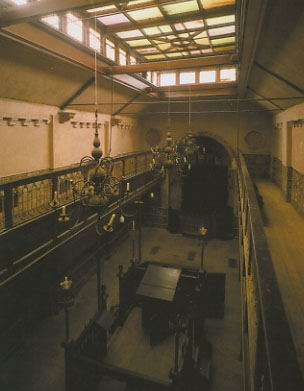An early play-bill for the Hall lists acts like "Madame Pedley and the Infant Lotto", or "Syluest the Monstre" (what on earth could they have been like?): at the time he wrote this piece, Mozart was himself travelling Europe as an equally Dickensian "infant phenomenon". At one point, he was confined alone with pen and paper to prove he could write such music without help.
For a piece about what should be done to ensure salvation, Wilton's, with its scaffolding-props, damp stains, bare bricks, exposed joists and its fate by no means certain, seemed a fitting environment. The occasional uncertainties and asperities of tone in the period instruments contributed to the mood; even the trains passing nearby managed to contribute ominous rumbles at just the right moments.
The piece is the first part of a trilogy written for Lenten entertainment in the palace of the Archbishop of Salzburg (the other two, by other composers, are lost). Because of the season, the pieces had to be religious in theme, but this translation (barely theistic, let alone theological, in content) was sprightly enough to have delighted the notoriously potty-mouthed young Mozart, though not perhaps the Archbishop: "Get up you lazy sod / Prepare to meet your Lord!".
The music is full of hints and pre-echoes of grown-up Mozart, with many delightful moments. However, the arias, though tuneful and demandingly florid, are in the "Say what you're going to say, say it, say what you've said" manner, which halts dramatic development rather than forwarding it. This leaves a lot of scope (or should that be temptation?) for stage business - or busyness.
So the lapsed Christian becomes a back-packing student asleep at an airport boarding gate, with Justice and Forgiveness as contrasting check-in operators, the Christian Spirit as a rather fearful security attendant and the Worldly Spirit as a show-stealing flirty party girl who would probably get the flight diverted to Prestwick. She force-feeds the protagonist Christmas lunch and throws sweets to the audience, before he turns his back on his fears of Judgment Day to run off with her.
Even while singing the final trio, the attendants board a queue of extras through the celestial security gate - one of them sniffed and barked at by a live dog.
The youthful cast sang beautifully (sometimes almost too powerfully for the hall). By contrast, well over half the audience must have been over 50 - the Herbivore class in full ruminant mode. I heard one distinguished-looking older gentleman discussing his outrage at having to pay a booking fee at the Wigmore Hall, despite being a Friend: "I said, in that case, I'll join the Enemies of the Wigmore Hall. Mind you, I'm the only member".



